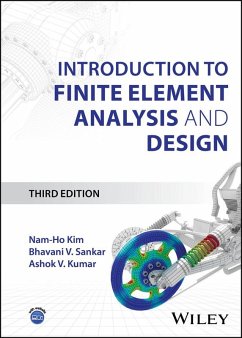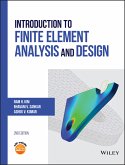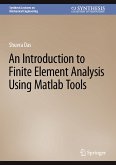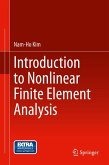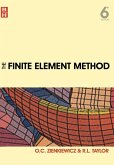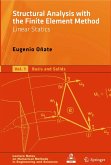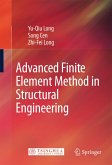A clear and accessible overview of the Finite Element Method
The finite element method (FEM), which involves solutions to partial differential equations and integro-differential equations, is a powerful tool for solving structural mechanics and fluid mechanics problems. FEM results in versatile computer programs with flexible applications, usable with minimal training to solve practical problems in a variety of engineering and design contexts. Introduction to Finite Element Analysis and Design offers a comprehensive yet readable overview of both theoretical and practical elements of FEM. With a greater focus on design aspects than most comparable volumes, it's an invaluable introduction to a key suite of software and design tools. The third edition has been fully updated to reflect the latest research and applications.
Readers of the third edition of Introduction to Finite Element Analysis and Design will find:
Introduction to Finite Element Analysis and Design is ideal for advanced undergraduate students in finite element analysis- or design-related courses, as well as for researchers and design engineers looking for self-guided tools.
The finite element method (FEM), which involves solutions to partial differential equations and integro-differential equations, is a powerful tool for solving structural mechanics and fluid mechanics problems. FEM results in versatile computer programs with flexible applications, usable with minimal training to solve practical problems in a variety of engineering and design contexts. Introduction to Finite Element Analysis and Design offers a comprehensive yet readable overview of both theoretical and practical elements of FEM. With a greater focus on design aspects than most comparable volumes, it's an invaluable introduction to a key suite of software and design tools. The third edition has been fully updated to reflect the latest research and applications.
Readers of the third edition of Introduction to Finite Element Analysis and Design will find:
- 50% more exercise problems than the previous edition, with an accompanying solutions manual for instructors
- A brand-new chapter on plate and shell finite elements
- Tutorials for commercial finite element software, including MATLAB, ANSYS, ABAQUS, and NASTRAN
Introduction to Finite Element Analysis and Design is ideal for advanced undergraduate students in finite element analysis- or design-related courses, as well as for researchers and design engineers looking for self-guided tools.
Dieser Download kann aus rechtlichen Gründen nur mit Rechnungsadresse in D ausgeliefert werden.

